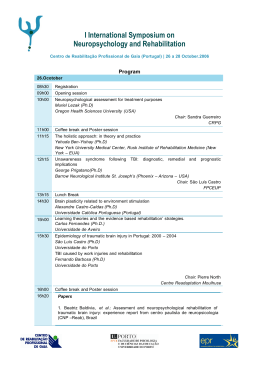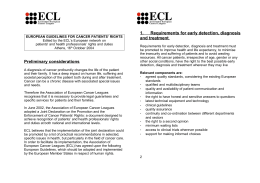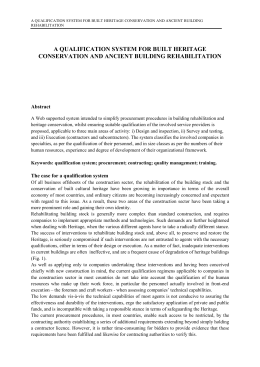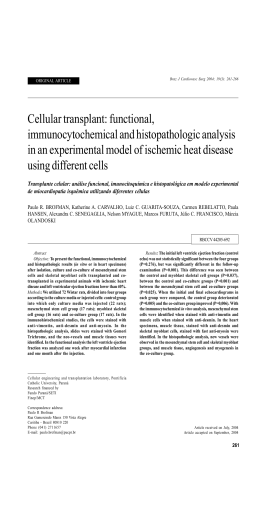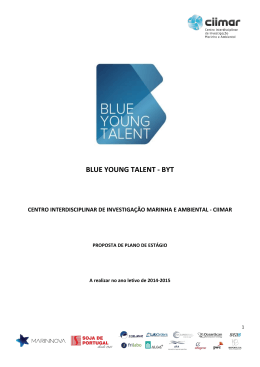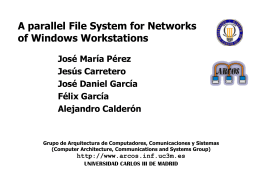Cadeiras de rodas motorizadas Prof. Juracy Emanuel [email protected] Colegiado de Engenharia de Computação Univasf 03 de setembro de 2010 ● Esta apresentação está baseada primariamente na revisão dos artigos desenvolvidos pelo : ● Human Engineering Research Laboratories, Department of Veterans Affairs (VA) Center of Excellence in Wheelchairs and Associated Rehabilitation Engineering, VA Pittsburgh Healthcare System, Pittsburgh, PA 15206, USA http://www.herlpitt.org/ – DING, D; COOPER, R.A. Electric-Powered Wheelchairs : A review of current technology and insight into future directions. IEEE Control Systems Magazine, pp. 22-34, April 2005. – COOPER, R.A.; COOPER, R.; TOLERICO, M.; GUO,S.; DING, D.; PEARLMAN, J.Advances in Electric-Powered Wheelchairs. Topics in Spinal Cord Injury Rehabilitation, pp. 15-29, Spring 2006. – KWARCIAK,A.M.; COOPER, R.A.; Fitzgerald, S.G. Curb descent testing of suspension manual wheelchairs. Journal of Rehabilitation Research & Development, pp. 73-84, Volume 45, Number 1, 2008. – Wang, H.; Salatin, B; Grindle, G.G.; Ding, D.; Cooper, R.A. Real-time model based electrical powered wheelchair control, Medical Engineering & Physics, pp. 1244–1254 31, 2009. – Rory A. Cooper, Michael L. Boninger, Donald M. Spaeth, Dan Ding, Songfeng Guo, Alicia M. Koontz, Shirley G. Fitzgerald, Rosemarie Cooper, Annmarie Kelleher, and Diane M. Collins. Engineering Better Wheelchairs to Enhance Community Participation. IEEE Transactions on Neural Systems and Rehabilitation Engineering, vol. 14, no. 4, December 2006. ● ● ● ● Rory Cooper Bioengineering; Rehabilitation Science and Technology University of Pittsburgh Rory A. Cooper, Ph.D., received his B.S. and M.Eng. degrees in electrical engineering from California Polytechnic State University, San Luis Obispo in 1985 and 1986, respectively. He received his Ph.D. degree in electrical and computer engineering with a concentration in bioengineering from University of California at Santa Barbara in 1989. He is FISA & Paralyzed Veterans of America (PVA) chair, Distinguished Professor in the Department of Rehabilitation Science and Technology, and Professor of Bioengineering and Mechanical Engineering at the University of Pittsburgh. He is also a professor in the departments of Physical Medicine and Rehabilitation, and Orthopedic Surgery at the University of Pittsburgh Medical Center Health System. Professor Cooper is director and VA Senior Research Career Scientist of the Center for Wheelchairs and Associated Rehabilitation Engineering, a VA Rehabilitation Research and Development Center of Excellence. http://www.cmu.edu/qolt/People/leadership/cooper-rory.html ● ● "I have focused my entire professional work toward improving the lives of people with disabilities, their families, and the people who assist them. Much of my work has been focused on providing mobility, but I have also made excursions into accessibility and assistive technology policy. My first line of research was related to manual wheelchairs: their design, usage, and optimization. Over the past decade, I have focused more of my work on electric-powered mobility. This has led to notable contributions to the PAPAW, IBOT, and other robotic mobility devices. I have worked with colleagues at Carnegie Mellon from nearly my first day in Pittsburgh, as our common research interests formed natural collaborations. I am most excited by the continuum of basic engineering research through translation to clinical/community integration make working on QoLT stimulating and rewarding in Pittsburgh." Innovate, Adapt, Overcome Rory Cooper Looks Forward and Serves A Generation By Scott Roark http://www.calpolynews.calpoly.edu/magazine/Spring-10/Innovate.html ● ● Cooper was just 20 when he was hit by truck while cycling. The accident happened in Germany, where he was stationed in the U.S. Army. His spinal cord was severely injured, leaving him paralyzed from the waist down. “The most challenging part of the recovery process was adapting to a new perception of myself – it takes longer to adapt emotionally,” Cooper said. “The goal of my education at Cal Poly and athletics kept me going.” ● ● ● When a young Rory Cooper (EE ’85, Master’s in EE ’86) arrived at Cal Poly in a wheelchair, paralyzed from a cycling accident, his professors saw an engineering challenge. Nearly a decade before the passage of the Americans with Disabilities Act, Electrical Engineering Professor Saul Goldberg and his colleagues modified the lab benches and classroom materials for Cooper, allowing him to fully participate in the curriculum. The result: an accomplished scholar, award-winning athlete, author and lecturer with an international audience, and a professional career that has impacted thousands of wounded veterans. Cooper has never forgotten it. “That was the best part of my education at Cal Poly – Professor Goldberg fully embraced the notion of ‘adapting the environment’ and working accordingly,” he recalled. – DING, D; COOPER, R.A. Electric-Powered Wheelchairs : A review of current technology and insight into future directions. IEEE Control Systems Magazine, pp. 22-34, April 2005. – COOPER, R.A.; COOPER, R.; TOLERICO, M.; GUO,S.; DING, D.; PEARLMAN, J.Advances in Electric-Powered Wheelchairs. Topics in Spinal Cord Injury Rehabilitation, pp. 15-29, Spring 2006. – KWARCIAK,A.M.; COOPER, R.A.; Fitzgerald, S.G. Curb descent testing of suspension manual wheelchairs. Journal of Rehabilitation Research & Development, pp. 73-84, Volume 45, Number 1, 2008. – Wang, H.; Salatin, B; Grindle, G.G.; Ding, D.; Cooper, R.A. Real-time model based electrical powered wheelchair control, Medical Engineering & Physics, pp. 1244–1254 31, 2009. ● Rory A. Cooper, Michael L. Boninger, Donald M. Spaeth, Dan Ding, Songfeng Guo, Alicia M. Koontz, Shirley G. Fitzgerald, Rosemarie Cooper, Annmarie Kelleher, and Diane M. Collins. Engineering Better Wheelchairs to Enhance Community Participation. IEEE TRANSACTIONS ON NEURAL SYSTEMS AND REHABILITATION ENGINEERING, VOL. 14, NO. 4, DECEMBER 2006. Rory A. Cooper, PhD, Michael J. Dvorznak, BS, Thomas J. O'Connor, MS, Michael L. Boninger, MD, Daniel K. Jones, PhD. Braking Electric-Powered Wheelchairs: Effect of Braking Method, Seatbelt, and Legrests. Arch Phys Med Rehabil Vol 79, October 1998 Trabalho valendo 1,0 ponto na média final – poderá ser entregue até o dia 15/09. Trabalho valendo 1,0 ponto na média final para cada grupo formado na semana passada. Cada grupo deverá apresentar uma revisão bibliográfica, sob a ótica da especialidade do grupo (seja Mecânica, Produção, ou Elétrica) dos artigos listados nesta apresentação. Os trabalhos de revisão deverão ser feitos no formato de TCC. Deverão entregar até as 24:00hs do dia 15/09 (por email, Moodle, ou documento impresso). Grupos - MECÂNICA ● ● ● Grupo 1 : Victor Brito Edmundo Mascarenhas João Araújo Grupo 2 : Felipe Grassi Rodrigo Bertora Darlisson Ferreira Grupo 3 : Luciano Aragão Grupos - PRODUÇÃO ● ● Grupo 1 : Mateus Gama Bruno Luis Raoni Gonzaga Grupo 2 : Neurisnaldo Meriele Ferraz Grupos - ELÉTRICA ● ● Grupo 1: Helder Henri Hamilton Fernandes Evandro Barquette Grupo 2 : Marcos Vinícius Alisson Amorim (CECOMP) Rodrigo Bacurau (CECOMP)
Download

